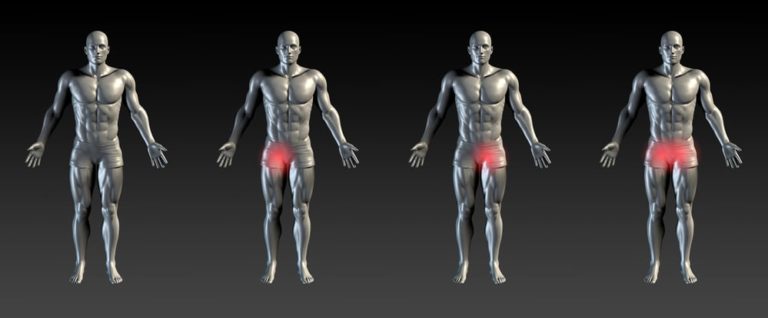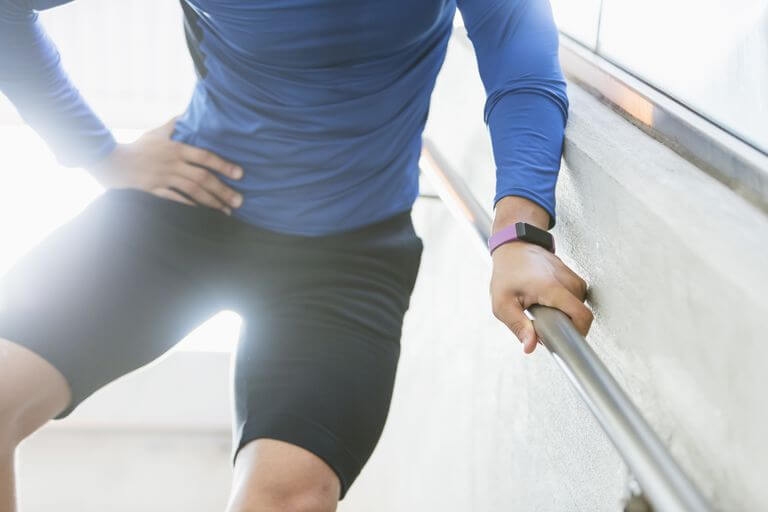Pain In Groin When Walking - Groin pain is common among athletes and other people who engage in activities that involve repetitive movements, such as running or jumping. It can also occur due to everyday activities, such as standing or walking. Groin pain can be caused by various factors, including damage to the muscles and tendons of the inner thigh, hip joint problems, and stress fractures. In this article, we'll explore the common causes of groin pain, how to diagnose it, and what steps you can take to ease the pain and prevent it from recurring.
Causes of Groin Pain
Adductor-Related Groin Pain
 One of the most common causes of groin pain in athletes is adductor-related pain. This type of pain is caused by damage or overuse of the adductor muscle group, which is located on the inner thigh. Symptoms of adductor-related groin pain include pain in the groin area that worsens with activity, a feeling of tightness or weakness in the inner thigh, and difficulty walking, running, or cycling.
One of the most common causes of groin pain in athletes is adductor-related pain. This type of pain is caused by damage or overuse of the adductor muscle group, which is located on the inner thigh. Symptoms of adductor-related groin pain include pain in the groin area that worsens with activity, a feeling of tightness or weakness in the inner thigh, and difficulty walking, running, or cycling.
Hip Joint Problems
Hip joint problems can also cause groin pain. The hip joint is a ball-and-socket joint that connects the femur bone to the pelvis. It is surrounded by muscles, tendons, and ligaments that help support the joint and allow it to move. If any of these structures are damaged or inflamed, it can cause pain in the groin area. Some common hip joint problems that can cause groin pain include arthritis, labral tears, and hip impingement.
Diagnosing Groin Pain
Diagnosing the cause of your groin pain begins with a physical exam by a healthcare provider. During the exam, the provider will ask about your symptoms, medical history, and any previous injuries you may have had. They will also perform a physical exam to check for signs of swelling, tenderness, or limited range of motion in the affected area.
If a clear diagnosis cannot be made from the physical exam, your provider may order imaging tests, such as an X-ray, MRI, or ultrasound, to get a closer look at the structures inside your groin and hip joint.
Tips and Ideas for Managing Groin Pain
Rest and Ice
 If you are experiencing groin pain, the first step to managing the pain is to rest the affected area. Avoid any activities that aggravate the pain, and apply ice to the area for 15-20 minutes several times a day. This helps to reduce inflammation and ease pain and swelling.
If you are experiencing groin pain, the first step to managing the pain is to rest the affected area. Avoid any activities that aggravate the pain, and apply ice to the area for 15-20 minutes several times a day. This helps to reduce inflammation and ease pain and swelling.
Stretching and Strengthening Exercises
Stretching and strengthening exercises can help improve the flexibility and strength of the muscles and tendons in the groin area. This can help reduce the risk of further injury and speed up the healing process. Your healthcare provider can recommend specific exercises based on your diagnosis and individual needs.
Physical Therapy
If your groin pain is severe or does not improve with rest and other at-home treatments, your healthcare provider may recommend physical therapy. Physical therapy involves working with a physical therapist to develop a personalized treatment plan that addresses your specific needs and goals. This may include a combination of stretching, strengthening, and other exercises.
Surgical Options
In some cases, surgery may be necessary to repair damaged structures in the groin or hip joint. Your healthcare provider can help you determine whether surgery is the best option for treating your groin pain.
Preventing Groin Pain
Proper Warm-Up and Stretching
:max_bytes(150000):strip_icc()/GettyImages-10440892221-2c876c6432124e87869df857e74b0a47.jpg) One of the best ways to prevent groin pain is to properly warm up before any physical activity and stretch the muscles in your groin, hip, and thigh. This can help reduce the risk of injury and improve your overall performance.
One of the best ways to prevent groin pain is to properly warm up before any physical activity and stretch the muscles in your groin, hip, and thigh. This can help reduce the risk of injury and improve your overall performance.
Avoid Overuse
Avoiding overuse of the muscles and tendons in the groin and hip area is also key to preventing groin pain. If you engage in activities that involve repetitive movements, such as running or jumping, be sure to take breaks and allow your body to rest and recover.
Proper Footwear and Gear
Wearing proper footwear and gear for your activity can also help prevent groin pain. Make sure your shoes provide adequate support and cushioning, and consider wearing a brace or other supportive device if necessary.
 Groin pain can be a frustrating and debilitating condition, but with proper diagnosis and treatment, it can usually be managed effectively. Use the tips and ideas outlined in this article to help prevent, diagnose, and treat groin pain, and get back to doing the activities you love without pain or discomfort.
Groin pain can be a frustrating and debilitating condition, but with proper diagnosis and treatment, it can usually be managed effectively. Use the tips and ideas outlined in this article to help prevent, diagnose, and treat groin pain, and get back to doing the activities you love without pain or discomfort.
Find more articles about Pain In Groin When Walking